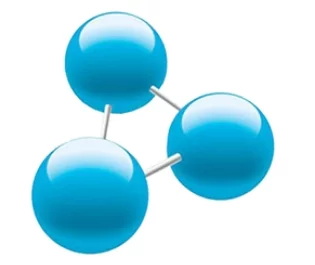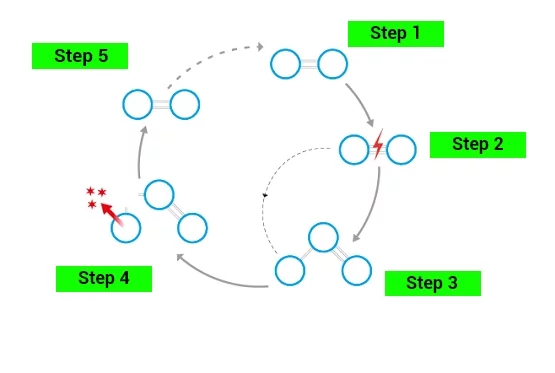
The principle of ozone disinfection, sterilization and odor removal
There are various disinfection products on the market, including chemical disinfection, high temperature disinfection, ultraviolet disinfection, and ozone disinfection.
Ozone disinfection efficiency
Some literatures have shown that the use of ozone disinfection for Escherichia coli, Salmonella, Bacillus cereus, Bacillus subtilis, Bacillus megaterium, Listeria, Mycobacterium, Staphylococcus aureus, Legionella pneumophila, Pseudomonas fluorescens , Feichsin Sartorius, phage, tobacco mosaic virus, polio virus, rotavirus, herpes virus, hepatitis A virus , hepatitis B virus, Aspergillus fungus , HIV virus and other disinfection and inactivation experiments have achieved very good results.
For the deodorization function of ozone, some odors are released by molds or other microorganisms. When these microorganisms like a virus and bacteria are killed, the odor is also removed. Some odors are volatile organic gas molecules in the air, and ozone also combines with these organic gas molecules to effectively destroy these odorous gas molecules, thereby achieving the purpose of deodorization.
Do we need an air and surface purifier for virus and bacteria

O3
Stay alert in
Ozone Mode !
Ozone, the English name is ozone/trioxygen, is an allotrope of oxygen composed of three oxygen atoms. At room temperature, it is a colorless gas with a special smell. Its name “ozein (ὄζειν)” comes from the Greek word , which means “smell/smell”. Ozone molecules are highly oxidizing, highly reactive, unstable, and easy to decompose. They will gradually decompose into oxygen at room temperature, and will be accelerated to oxygen due to light, heat, moisture, metals, metal oxides and gas catalysts
Ozone is very oxidizing. The sterilization and disinfection function of ozone relies on its strong oxidizing property . The oxygen atoms connected by single bonds in the ozone molecule are very unstable and easily break into oxygen atom radicals, and are easy to combine with other molecules, thereby destroying many organic molecules.
A purifier unit with the Ozone mode is a broad-spectrum bactericide, which can kill microbial pathogens including fungi/molds, fungal spores, bacteria, bacterial spores, viruses, protists, etc. Ozone is a very complicated process for the sterilization and disinfection of microbial pathogens. Ozone can combine with many components in cells to destroy their structure and function-including proteins on cell membranes, unsaturated fatty acids, various enzymes, and peptides on cell membranes. Glycans, DNA or RNA inside pathogens, enzymes, proteins of bacterial fungal spores and viral capsids, peptidoglycans, and enzymes, etc. -in order to kill pathogenic microorganisms. In addition to the strong oxidizing property of the ozone molecule itself, the by-products produced during the reaction of the ozone molecule such as ·OH, ·O2–, HO·3, etc. also have strong oxidizing properties.
Half-life of ozone
Step 1 : Oxygen molecule (O₂)
Step 2 : The applied energy splits the oxygen molecule(O₂) into atomic oxgen
Step 3 : The single atomic Oxygen connects to an oxygen molecule(O₂) and ozone(O₃) is formed
Step 4 : The single atomic oxygen disconnects from the ozone molecule (O₂) and performs oxidation
Step 5 : The ozone molecule(O₃) has turned into an oxygen molecule(O₂). The cycle is completed
In fact, when the air and surface purifier is used in ozone generator mode, the concentration of ozone cannot reach the concentration of ozone in the confined space in the research experiment mentioned above, and the decomposition rate of ozone should be faster. However, if you have this concern, after using the ozone generator, you can turn on the air conditioner/heating/exhaust fan in the room you are using. If it is a garage, you can open the garage door greatly to speed up ventilation, and most of the day or night It should help not to enter this room.
Ozone disinfection in the main bathroom
Considering the actual situation, it happened that the main bathroom was not cleaned for a while, and some mildew appeared on the bathtub and shower curtain, so the main bathroom was selected as the location for the first evaluation. At the same time, the vacuum cleaner and the vacuum cleaner filter that have just sucked a lot of dog hair are also placed in the main bathroom. The vacuum cleaner filter smells very strong. It has been cleaned many times or even sprayed with alcohol, but the smell has not been washed away.
After the ozone purifier starts to work, some noises can be heard through the door, like the sound of a small fan turning, the sound is not loud, so don’t worry about making noise next door. The noise written in the manual is less than 35 decibels. In addition to closing the main guard door, we turned off the ventilation of the main guard and the heating in the home, closed the doors of adjacent rooms, opened the windows in the adjacent rooms, and made sure to keep the range of activities as far away as possible. If conditions permit, it is best to go out. After the set time is over, the ozone generator stops working. Open the doors and windows for ventilation for at least 30 minutes to 1 hour, and then enter the room for activities .
Automatically stop according to your programming
There are many applications of ozone sterilization generators
Remove all kinds of odors in houses (such as residential apartments, villas, offices, gyms, storage rooms/warehouses, basements, lofts, restaurants, etc.), cars, boats, etc., including smoke, oily smoke, pet odors, The smell after the fire, etc. They used the Ozone system to remove the smoke smell but did not remove it. Later, they used an ozone generator. It was done in two days without any smell of smoke.
Remove peculiar smell, paint smell, and formaldehyde in newly decorated houses.
If you are prone to allergies, you can also use it regularly to reduce odor or microbes and other allergens.
Use ozone to treat fresh fruits, vegetables, salads, etc., and sterilize and keep them fresh.

